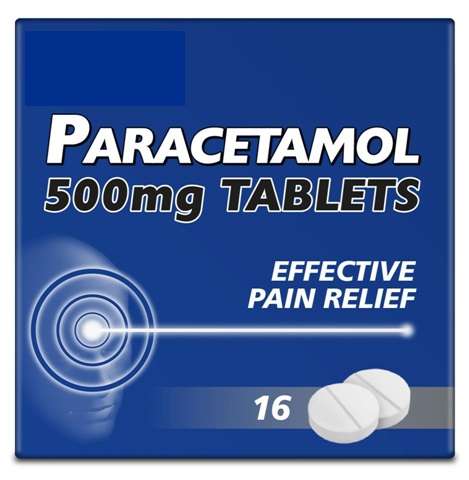By Chinedu Akpa. B. Pharm. Freelance Health Writer and DLHA Volunteer. Medical review and editorial support provided by The DLHA Team

A black lady taking a pill orally with a glass of water in hand. Image credit: Unsplash.
The International Association for the Study of Pain defines pain as "an unpleasant sensory and emotional experience associated with, or resembling, actual or potential tissue damage." [1]
Pain is regarded as a subjective issue because it is not caused solely by stimuli, and what causes pain in one person may not cause pain in another, as the degree to which individuals feel pain varies. In this article, we will focus on the management of pain influenced by stimuli, and pain with a known cause.
Because primary healthcare centers are often the first point of contact for people suffering from pain, it is critical that healthcare professionals and individuals be empowered with basic knowledge about managing the condition as it can have an impact on the physical, social, and emotional lives of its victims.
Do you know that pain has its positive side? I understand you would not agree because of how pain has hurt you in the past. But here's the thing; if there was no pain, you could lose some of your body's most vital tissues to harmful stimuli. Pain is a protective stimulus as it ensures that when potentially damaging stimuli come into contact with your body, it signals the brain to immediately withdraw the body from such stimuli in order to limit or avoid tissue damage.
Your perception of pain is influenced by your central nervous system (CNS), which consists of your brain and spinal cord, as well as your peripheral nervous system (PNS), which consists of nerve cells outside the CNS. [2]
Pain perception is typically divided into three stages: pain induction or transduction (which occurs in the PNS), pain transmission to the spinal cord and ultimately the brain, and finally pain perception and interpretation in the brain. [2]
During transduction, the body converts stimuli such as heat, chemical, and pressure into electrical signals. This process involves chemicals like prostaglandins, cytokines, interleukins, and ion channels. [3] The signals are then transmitted through nerve fiber pathways to the brain where it is interpreted.
Modulation (up or down regulation) of pain signals may occur at different levels of the pain pathway during the transmission process to the brain. This may explain why people's perceptions of pain vary. [4] Endorphin is an example of a chemical involved in this process.
Pain medications are an integral part of treatment in the primary care setting. There are different classes, and they are usually deployed depending on the severity of pain, side effects, and patient peculiarity.
Managing pain can be difficult because the cause of pain can be a combination of several factors. Someone, for example, may complain of neck pain when they awaken from a sleep. In this case, the cause of the pain could be the positioning of the head on the pillow while sleeping. Healthcare professionals upon asking questions often discover that the neck muscles may have been strained during sleep as a result of how they were placed. As a result, simply administering a pain reliever may not effectively alleviate the pain.
Another example is nerve pain caused by disease conditions such as diabetes or pressure placed on the nerves as a result of a person sitting or standing. In such a case you will require a cocktail of medications to manage the pain effectively. Many people have continued to suffer from pain despite being on medication as a result of their prescribers' lack of understanding of the source of the pain. So, understanding the cause of pain is critical to administering the appropriate medication(s).
It should also be noted that the use of medications will not completely eliminate all kinds of pain as pain caused by certain health conditions can best be managed through a combination of treatments and therapies tailored to the individual's needs.
There are different classes of pain medication as listed below, and they are often classified based on the site of the body where they act, their side effects, and how they act.
Nonsteroidal anti-inflammatory drugs (NSAIDs) are very popular among pain medications and they are divided into coxibs and non-coxibs. Read on to find out more about this class of pain medication.
They are medications used to relieve pain, fever, and inflammation caused by damaging stimuli. Their anti-inflammatory effects differ from those of steroids because they do not have the same chemical structure.
They are classified into two groups based on their ability to selectively inhibit the enzyme cyclo-oxeganse (COX). The enzyme is classified into two types: COX-1 and COX-2. They both contribute to the production of a chemical called prostaglandins.
COX-1 produces the type of prostaglandins that induce pain transmission, as well as the one that lines the stomach, protecting it from acidic stomach contents.
COX-2 however produces prostaglandins that are involved in pain transduction and transmission only [5].
It is on the basis of this differential activity that NSAIDs were divided into two; selective and non-selective COX inhibitors or coxibs and non-coxibs.
Celecoxib and etoricoxib are two examples of selective NSAIDs, with celecoxib being the only one available in the Nigerian primary care settings. It is available as tablets, capsules and oral solutions. It is taken orally as prescibed or as directed by your healthcare provider or as instructed in the medication leaflet.
This class of drug was developed in response to stomach ulcers caused by non-selective NSAIDs. It has become a source of relief for millions of Nigerians who suffer from ulcers and must deal with one or more painful conditions. It works by selectively blocking the activities of COX-2, preventing the prostaglandins produced by this enzyme from transducing or transmitting pain signals.
Non-selective NSAIDs inhibit the two forms of COX, preventing pain transduction and transmission while also causing stomach ulcers. Examples include ibuprofen, diclofenac, meloxicam, naproxen, aspirin, indomethacin, ketorolac, and aspirin.
Have you ever switched from one NSAID to another in the hope of finding a more potent one? If this is the case, you are not alone; some people even combine two NSAIDs in the hope of achieving better pain relief. But the big question is: does switching produce more potency?
The answer to the above question is yes, based on the evidence available. The Oxford League Table is a good tool for the assessment of the differences in the efficacy of NSAIDs. [6]
Coxibs were developed to address the gastrointestinal side effects associated with non-coxibs. However, the introduction of coxibs only resolved the gastrointestinal side effect, leaving the side effects below unresolved:
People with the conditions listed below should exercise extreme caution when taking NSAIDs; they should only take them if the benefits outweigh the risks; otherwise, they should avoid using NSAIDs.

Image of a pack of paracetamol tablets
Paracetamol (also known as Acetaminophen) is a common pain reliever used in Nigeria. It is available as tablets, capsules and oral solutions. It is usually prescribed casually by healthcare providers in primary healthcare settings but also hugely self-administered by Nigerians at the first sign of any type of pain.
Paracetamol works similarly to NSAIDs by inhibiting COX enzymes, but its COX activity is concentrated in the brain and spinal cord, which accounts for its low anti-inflammatory properties when compared to NSAIDs. But, like NSAIDs, it reduces pain and fever, although to a lesser extent. [7]
Unlike NSAIDs, paracetamol is considered safe for use during pregnancy; however, some researchers have linked its use to birth defects, but the evidence for this claim is limited. [8] People with cardiovascular disease, gastric ulcers, asthma, and hemophilia can take paracetamol without risk of side effects. [ 9]
Paracetamol is available in tablets, pessaries, injections, and syrups. Its usual dose is 1000mg, taken three times per day. It can be administered orally, injected, or inserted through the anus.
Side effects include liver toxicity (which occurs when a higher-than-normal dose is administered over time), dizziness, rash, Stephens-Johnson syndrome, angioedema, and urticaria (extremely itchy, round rash often caused by allergic reactions to food).
When going through pharmacy shelves, it is common to find paracetamol in combination with NSAIDs such as aceclofenac and paracetamol, ibuprofen and paracetamol, diclofenac and paracetamol, and naproxen and paracetamol. When patients are given this combination, they frequently ask if it is better than taking an NSAID alone.
Yes, and here's why; a review of data from 21 human studies involving 1909 patients found that combining paracetamol and NSAIDs may provide better pain relief than either drug alone. [10] Another study, which used data from the Cochrane database and included 1647 patients, found that combining paracetamol and ibuprofen at specific doses was more effective than either alone. [10]

A vial of injectable painkiller and a syringe on the table.
This type of pain medication is typically the last card offered by your doctor for pain. One reason for this is to protect patients from the psychological effects of the medication and its potential for abuse.
I am sure you have heard about the opioid epidemic in some countries; this is what prescribers try to avoid by keeping the medication until all other options have failed.
Opioids are only available by prescription in Nigeria and other parts of the world, for reasons that are not far fetched from those mentioned above. They are used to manage moderate to severe pain, examples are codeine, morphine, tramadol, dihydrocodeine, pentazocine, oxycodone, hydrocodone, and methadone.
Opioids work in the brain and spinal cord because their action sites (receptors) are widely distributed there, though they can also be found in other parts of the body. [11] These sites are referred to as mu, kappa, and delta. The mu sites are located in the spinal cord where they prevent the transmission of pain to higher brain centers, they are also found in some parts of the brain where they decrease pain perception. [11]
Paracetamol, like NSAIDs, can be combined with opioids; some common combinations include codeine + paracetamol, tramadol + paracetamol, and dihydrocodeine + paracetamol. A review conducted by AJ de Craen et al revealed that a combination of paracetamol and codeine was more effective than either medication alone. [12]
Drugs that are usually sold under strict regulation more often than not have safety concerns.
Codeine-containing cough syrups were banned in Nigeria following a 2018 BBC report that revealed the drug's indiscriminate use, resulting in widespread addiction problems, particularly in the country's north. Addiction is one of the most serious risks associated with opioid abuse. Furthermore, opioids can constrict the airways, making them an unsuitable choice for people with asthma and other airway issues.
Side effects of opioids can come in various forms and they include:
There are other medications that are sometimes used alone or in conjunction with standard pain medications. Some of them were not intended to be used as painkillers, but thanks to healthcare professionals' clinical knowledge and judgment, they were discovered to be useful agents for managing certain types of pain. Whether they are used alone or in conjunction with traditional pain medication depends on the type of pain being managed.
We have the following medication groups, each with examples.
Examples include amitriptyline, nortriptyline, duloxetine, fluoxetine, and sertraline. They are frequently used to treat chronic pain by affecting some of the chemicals in the brain that control pain perception. Antidepressants can treat a variety of pains, including neuropathic pain, fibromyalgia, migraine headaches, and muscle-skeletal pain.
Some anticonvulsants used to treat nerve pain and tension headaches include gabapentin, pregabalin, carbamazepine, and topiramate. They are usually preferred over opioids for chronic nerve pain due to their different side effects. They function similarly to antidepressants.
Muscle relaxants such as tizanidine, orphenadrine, baclofen, and methocarbamol are frequently used in conjunction with other pain medications to relieve muscle spasm-related pain. They generally work by blocking the impulses and channels that carry pain to the spinal cord and brain.
Steroids with anti-inflammatory properties, such as prednisone and dexamethasone, have been used to treat osteoarthritis and rheumatoid arthritis. It achieves this by inhibiting the migration of certain chemicals that cause inflammation at the site of injury or disorder. Typically, they are used in conjunction with other pain medications. However, because of the effects on the stomach, immune system, and skin, caution should be exercised when using this class of medication. They should be used in the shortest amount of time.
The effective use of pain medications in primary healthcare settings requires a collaborative effort from everyone on the healthcare team. The goal is to make sure that patients are properly cared for and that their pain is adequately managed.
This necessitates that physicians properly diagnose pain using standardized pain scales, and because the experience is largely subjective, the physician must listen to the patient describe their pain experience. Pharmacists must ensure that the appropriate medications are prescribed, as well as counsel patients on how to use their medication and any side effects that may occur. Nurses must assist inpatients in taking their medications as prescribed and provide advice when necessary.
1. The British Pain Society. What is Pain? [internet, n.d] cited April 23, 2024. Available from: https://www.britishpainsociety.org/about/what-is-pain/
2. Yam MF, Loh YC, Tan CS, Khadijah Adam S, Abdul Manan N, Basir R. General Pathways of Pain Sensation and the Major Neurotransmitters Involved in Pain Regulation. Int J Mol Sci. 2018 Jul 24;19(8):2164. doi: 10.3390/ijms19082164. PMID: 30042373; PMCID: PMC6121522. Available from: https://www.ncbi.nlm.nih.gov/pmc/articles/PMC6121522/
3. McEntire DM, Kirkpatrick DR, Dueck NP, Kerfeld MJ, Smith TA, Nelson TJ, Reisbig MD, Agrawal DK. Pain transduction: a pharmacologic perspective. Expert Rev Clin Pharmacol. 2016 Aug;9(8):1069-80. doi: 10.1080/17512433.2016.1183481. Epub 2016 May 23. PMID: 27137678; PMCID: PMC4975548. Available from: https://www.ncbi.nlm.nih.gov/pmc/articles/PMC4975548/
4. Kirkpatrick DR, McEntire DM, Hambsch ZJ, Kerfeld MJ, Smith TA, Reisbig MD, Youngblood CF, Agrawal DK. Therapeutic Basis of Clinical Pain Modulation. Clin Transl Sci. 2015 Dec;8(6):848-56. doi: 10.1111/cts.12282. Epub 2015 May 11. PMID: 25962969; PMCID: PMC4641846. Available from: https://www.ncbi.nlm.nih.gov/pmc/articles/PMC4641846/
5. Smith CJ, Zhang Y, Koboldt CM, Muhammad J, Zweifel BS, Shaffer A, Talley JJ, Masferrer JL, Seibert K, Isakson PC. Pharmacological analysis of cyclooxygenase-1 in inflammation. Proc Natl Acad Sci U S A. 1998 Oct 27;95(22):13313-8. doi: 10.1073/pnas.95.22.13313. PMID: 9789085; PMCID: PMC23795. Available from: Available from: https://www.ncbi.nlm.nih.gov/pmc/articles/PMC23795/
6. Ong CK, Lirk P, Tan CH, Seymour RA. An evidence-based update on nonsteroidal anti-inflammatory drugs. Clin Med Res. 2007 Mar;5(1):19-34. doi: 10.3121/cmr.2007.698. PMID: 17456832; PMCID: PMC1855338. Available from: https://www.ncbi.nlm.nih.gov/pmc/articles/PMC1855338/
7. Gerriets V, Anderson J, Patel P, et al. Acetaminophen. [Updated 2024 Jan 11]. In: StatPearls [Internet]. Treasure Island (FL): StatPearls Publishing; 2024 Jan-. Available from: https://www.ncbi.nlm.nih.gov/books/NBK482369/
8. Tadokoro-Cuccaro R, Fisher BG, Thankamony A, Ong KK, Hughes IA. Maternal Paracetamol Intake During Pregnancy-Impacts on Offspring Reproductive Development. Front Toxicol. 2022 Apr 14;4:884704. doi: 10.3389/ftox.2022.884704. PMID: 35499038; PMCID: PMC9047911. Available from: https://www.ncbi.nlm.nih.gov/pmc/articles/PMC9047911/
9. Józwiak-Bebenista M, Nowak JZ. Paracetamol: mechanism of action, applications and safety concern. Acta Pol Pharm. 2014 Jan-Feb;71(1):11-23. PMID: 24779190. Available from: https://pubmed.ncbi.nlm.nih.gov/24779190/
10. Ong CK, Seymour RA, Lirk P, Merry AF. Combining paracetamol (acetaminophen) with nonNon-steroidal antiinflammatory drugs: a qualitative systematic review of analgesic efficacy for acute postoperative pain. Anesth Analg. 2010 Apr 1;110(4):1170-9. doi: 10.1213/ANE.0b013e3181cf9281. Epub 2010 Feb 8. PMID: 20142348. Available from: https://pubmed.ncbi.nlm.nih.gov/20142348/
11. Pathan H, Williams J. Basic opioid pharmacology: an update. Br J Pain. 2012 Feb;6(1):11-6. doi: 10.1177/2049463712438493. PMID: 26516461; PMCID: PMC4590096. Available from: https://www.ncbi.nlm.nih.gov/pmc/articles/PMC4590096/
12. de Craen AJ, Di Giulio G, Lampe-Schoenmaechers AJ, et al. Analgesic efficacy and safety of paracetamol-codeine combinations versus paracetamol alone: a systematic review. 1996. In: Database of Abstracts of Reviews of Effects (DARE): Quality-assessed Reviews [Internet]. York (UK): Centre for Reviews and Dissemination (UK); 1995-. Available from: https://www.ncbi.nlm.nih.gov/books/NBK66748/
Published: April 27, 2024
© 2024. Datelinehealth Africa Inc. All rights reserved.
Permission is given to copy, use and share content for non-commercial purposes without alteration or modification and subject to attribution as to source.
DATELINEHEALTH AFRICA INC., is a digital publisher for informational and educational purposes and does not offer personal medical care and advice. If you have a medical problem needing routine or emergency attention, call your doctor or local emergency services immediately, or visit the nearest emergency room or the nearest hospital. You should consult your professional healthcare provider before starting any nutrition, diet, exercise, fitness, medical or wellness program mentioned or referenced in the DatelinehealthAfrica website. Click here for more disclaimer notice.